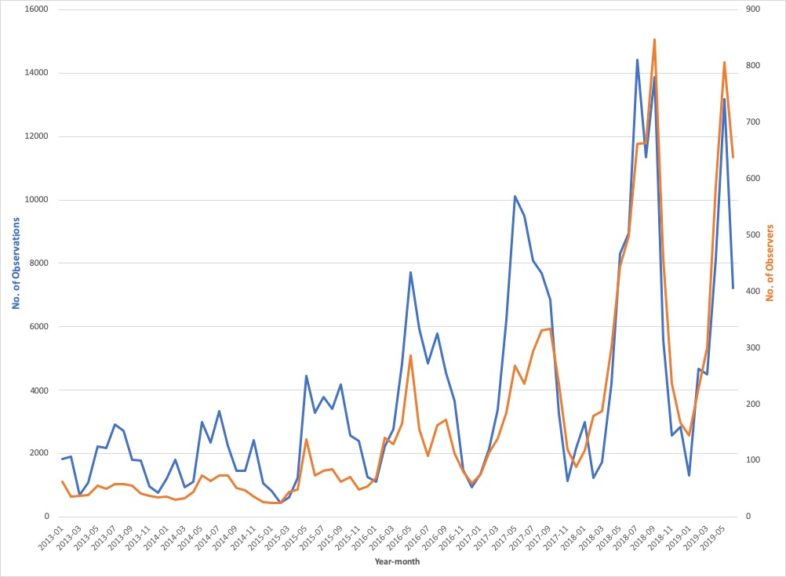300,000 Observations and Counting!
When Sean Beckett swung his net at a dragonfly in Peacham Bog yesterday, he made history. His observation was the 300,000th for the Vermont Atlas of Life on iNaturalist, making this one of the largest biodiversity datasets ever gathered for the state. And Sean is joined by more than 5,000 other observers that have made this happen in just over six years.
Sean's dragonfly was an Hudsonian Whiteface, a lover of peatlands. It is often the first to take flight over bogs and fens, sometimes as early as April. Sean carefully took it from the net, photographed it, and released it. Shortly after he shared it, two of Vermont's dragonfly experts and partners on the Vermont Atlas of Life Dragonfly and Damselfly Atlas agreed with Sean's identification, making it a 'research grade' observation and usable for biodiversity conservation and science.
From moss to moose, fungi to falcons, together, we're compiling one of the largest biodiversity datasets ever assembled for Vermont. It now contains information on almost 5,000 verified species records, including information on phenology, habitats, and more.
How many species occur in Vermont? You’d think we’d know this for a small state steeped in a rich tradition of naturalists. But, the simple answer is, no one really knows. We do know how many species there are of some of the popular taxonomic groups like birds (currently 382) and mammals (58). But how many invertebrates are there in Vermont? A back-of-the-envelope estimate puts the number at just over 21,400 species! There are about 2,150 species of vascular plants, with approximately 1,400 native plants. Not including protists, bacteria or viruses, we humans share Vermont with at least 26,000 to 45,000 species.
Join our growing community of citizen naturalists from around the Green Mountain State in discovering and sharing observations of Vermont life. Your observations can be turned into research-grade, citizen science data that will help us discover, track and ultimately conserve our natural heritage.










Comentarios
Añade un comentario